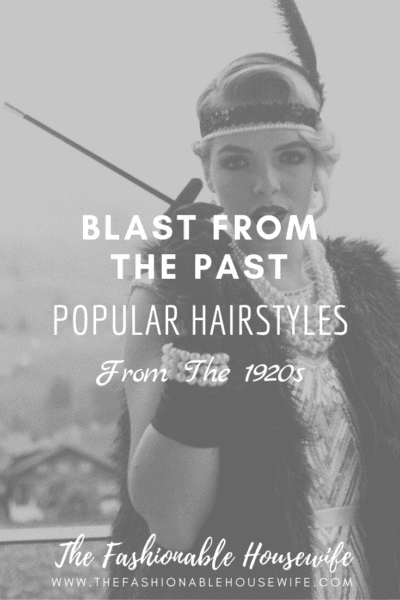
With the vast array of hairstyles available today, it can sometimes be hard to imagine how different things were for a girl back in the 1920s. Many of the styles born out of that tumultuous decade remain in vogue today, but we often forget that it was a huge step for a woman to cut her hair in the early 1920s and many faced scorn from their friends and family for causing such a scandal with their shorn locks.
In the early 1920s, there was no such thing as a women’s hair salon. Women had for decades kept their hair long, as it was perceived to be feminine and proper. This meant that women’s haircuts were performed at home by oneself or by a trusted friend. Later, when short hair became fashionable, it led to women flocking to men’s barbers asking for short haircuts, much to the surprise of the proprietors and the usual clientele. By the end of the 1920s, a new industry had been born, with women’s hair salons on virtually every street.
One of the first to bob their hair was opera singer Mary Garden in 1915. It would be a number of years before the short haircut became more widespread and accepted, so one of the first advances was the bun.
The Bun or Chignon
The bun was not a 1920s innovation; it had been in use for centuries by the working class to keep their hair out of the way when work needed to be done. The 1920s did bring in a trend for tighter, flatter buns as women craved for the new fashions but didn’t want to take the plunge and cut their hair. As the decade progressed, flat buns around the ears (“cootie garages”) became more prevalent.
The Bob
Popularized by dancer Irene Castle, the bob has ever since remained a mainstay in fashion. A short bob was worn with bangs or with the hair brushed to the side. Straight-hair bangs could be cut straight across covering the eyebrows or be heart-shaped. Often, the ends of the bangs rested on the cheekbones for a striking Pulp Fiction look.
The decade’s bobs were full of invention, as most women had to arrange the cut themselves at home (sometimes leading to disaster and a long summer of hat-wearing!)
So many bob styles came and went — the Egyptian bob, the Charleston Cut, the Orchid bob — but they can be summed up succinctly as either short and curly bobs or short and straight bobs.
The Shingle
The Shingle is a bob with tapering down to the neck. The hair by the neck is cut into a ‘V’ shape with hair clippers and ‘spit curls’ often accompany at the side. It was a running joke that the number of spit curls a woman wore was equal to the number of men she had kissed, earning them another name — ‘kiss curls’. This was one of the most popular hairstyles of the time.
The Eton Crop
Scandalously short for the time, the Eton Crop mirrored the mandatory boy’s haircut at Eton Preparatory School in London. The shortness of the Shingle cut is essentially extended all around the head. Adding kiss curls softened the look and Brilliantine was used to give the hair shine and to keep the style in place.
Though it caused a lot of controversy for the time for its daring, masculine look, it was also the perfect hairstyle for evening wear as it went well with the bell-shaped cloche hats popular at the time.
Marcel Waving
The latter half of the decade saw a move away from predominantly short and curly bobs to Marcel waving. Adding waves to hair by finger wave sculpting was not a new invention, but innovations around 1925 made curling and sculpting a lot safer and easier with electric irons. Marcel-waved hair required daily care and attention, but the style lasted for decades, taking on different forms, angles, and styles as fashion dictated.
Today, 1920s styles are popular with those who love the vintage look. Sometimes it’s a once-a-year indulgence (Halloween is fast approaching, so you could visit a hair salon to complete your flapper look), and for others, it’s a way of life.
Just remember that when you step into a hair salon in Columbus, OH for your 1920s look, or anywhere across the country for that matter, that it took real bravery for the first women who blazed a trail for equality and broke 1920s society’s norms.



